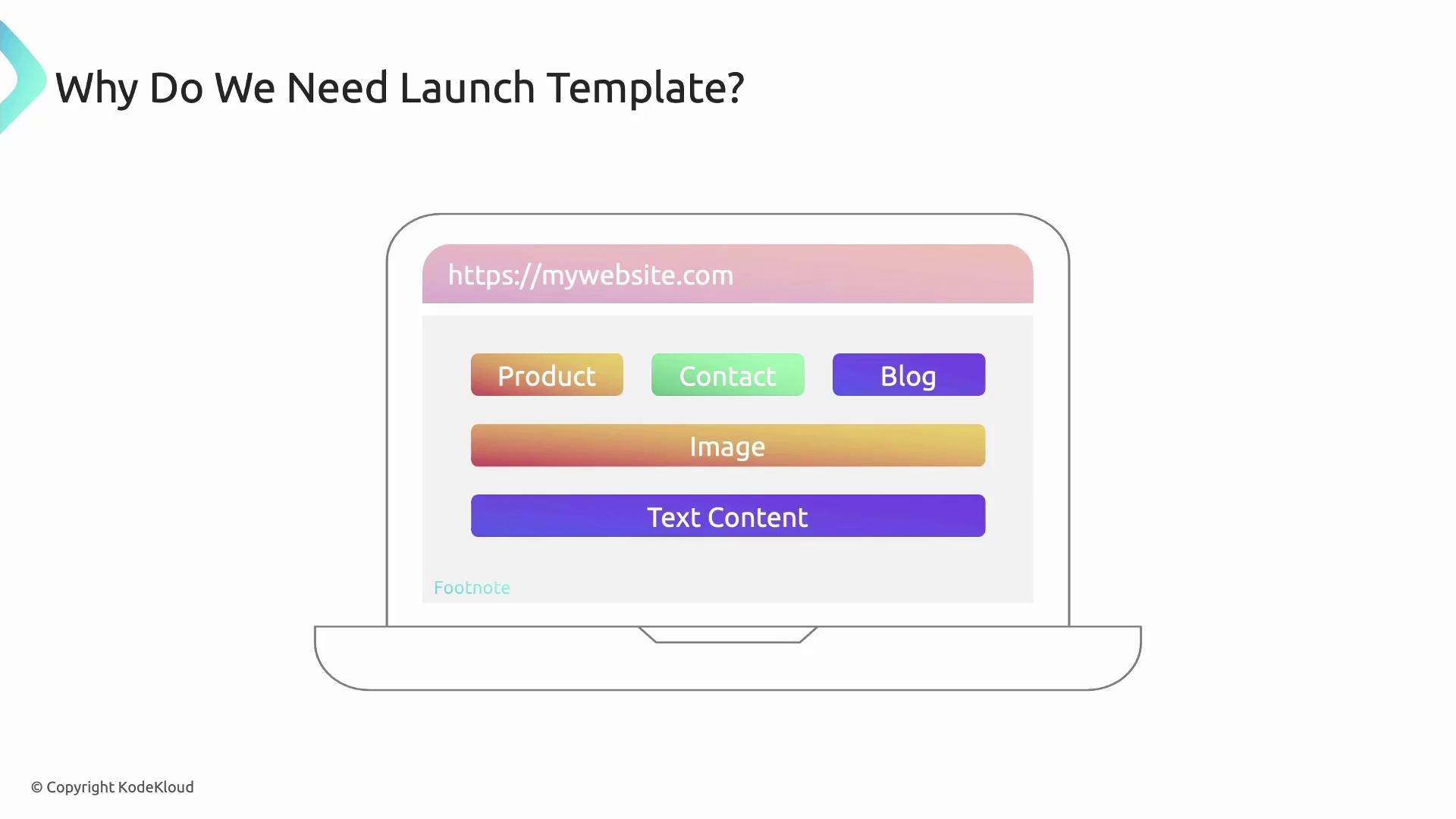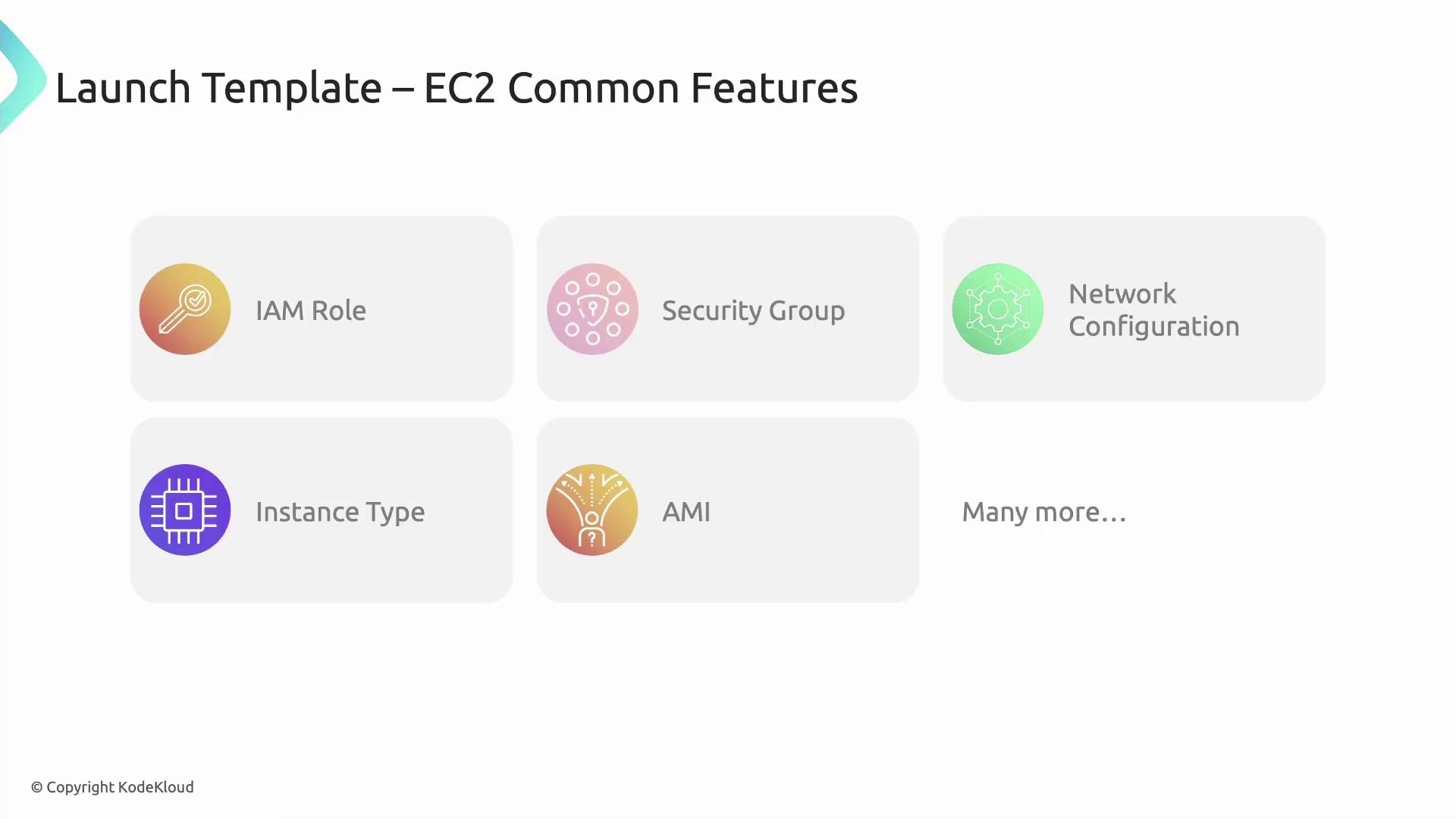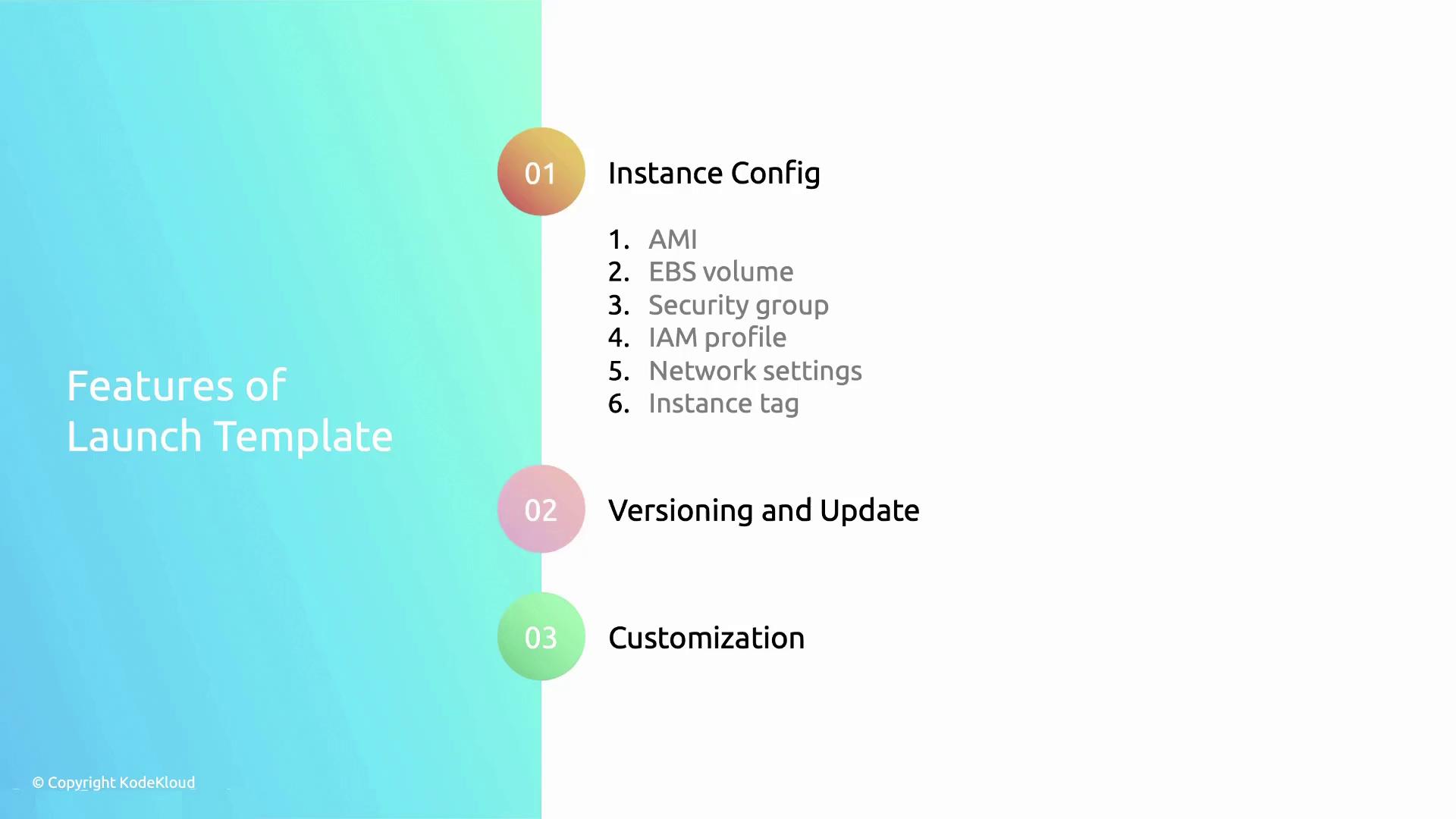Amazon Elastic Compute Cloud (EC2)
EC2 Advanced
Launch template
In this lesson, we’ll explore how AWS EC2 launch templates bring standardization and efficiency to instance provisioning. By defining reusable configuration blocks—such as AMIs, security groups, and IAM roles—you’ll accelerate deployments and enforce governance across your environment.
Why Launch Templates?
When building multiple websites, you wouldn’t recreate your homepage layout from scratch each time. You’d use a template with common elements: header, footer, and content blocks.

Similarly, EC2 instances often share recurring settings:

Using a launch template ensures repeatability, compliance, and faster provisioning across teams.
Core Features of Launch Templates
Launch templates let you bundle a wide range of EC2 settings:

| Feature | Description |
|---|---|
| AMI ID & Block Device Mappings | Specify the OS image and EBS volumes |
| Security Groups & Network | Control traffic using SGs, VPC, and subnets |
| IAM Role & Instance Profile | Define permissions through assigned roles |
| Tags & Metadata | Automate billing, monitoring, and organization |
| EBS Volume Configuration | Configure size, type, and encryption settings |
Versioning and Updates
Launch templates support versioning, so you can evolve settings without impacting running instances. Create new versions to roll out changes seamlessly.
Note
Each version is immutable—once created, you cannot modify it. Instead, create a new version to apply updates.
Parameterization and Overrides
Define default values in your base template, then override specific parameters—like subnet IDs, user data, or instance type—at launch time. This keeps templates DRY while still flexible.
aws ec2 run-instances \
--launch-template LaunchTemplateName=MyTemplate,Version=2 \
--overrides '{
"InstanceType":"t3.small",
"NetworkInterfaces":[{"DeviceIndex":0,"SubnetId":"subnet-0abcd1234"}]
}'
Additional Capabilities
Beyond core settings, launch templates can:
- Mix purchase options (On-Demand, Reserved, Spot) in one template
- Automate with AWS SDKs, CLI, CloudFormation, Terraform
- Enable termination protection to prevent accidental shutdowns
- Pass user data scripts for automated bootstrapping
- Choose different AMIs per launch for diverse OS or stacks
Warning
Launching too many template versions can lead to clutter. Regularly clean up unused versions to stay organized.
Examples
Here’s how to create a simple launch template via the AWS CLI:
aws ec2 create-launch-template \
--launch-template-name MyAppTemplate \
--version-description "v1" \
--launch-template-data '{
"ImageId":"ami-0123456789abcdef0",
"InstanceType":"t3.micro",
"SecurityGroupIds":["sg-0123456789abcdef0"],
"UserData":"IyEvYmluL2Jhc2gKZWNobyAiSGVsbG8sIEFTVycgQ0wiCg=="
}'
Links and References
- AWS EC2 Launch Templates Documentation
- AWS CLI Command Reference
- Terraform AWS Launch Template Resource
Watch Video
Watch video content
Practice Lab
Practice lab